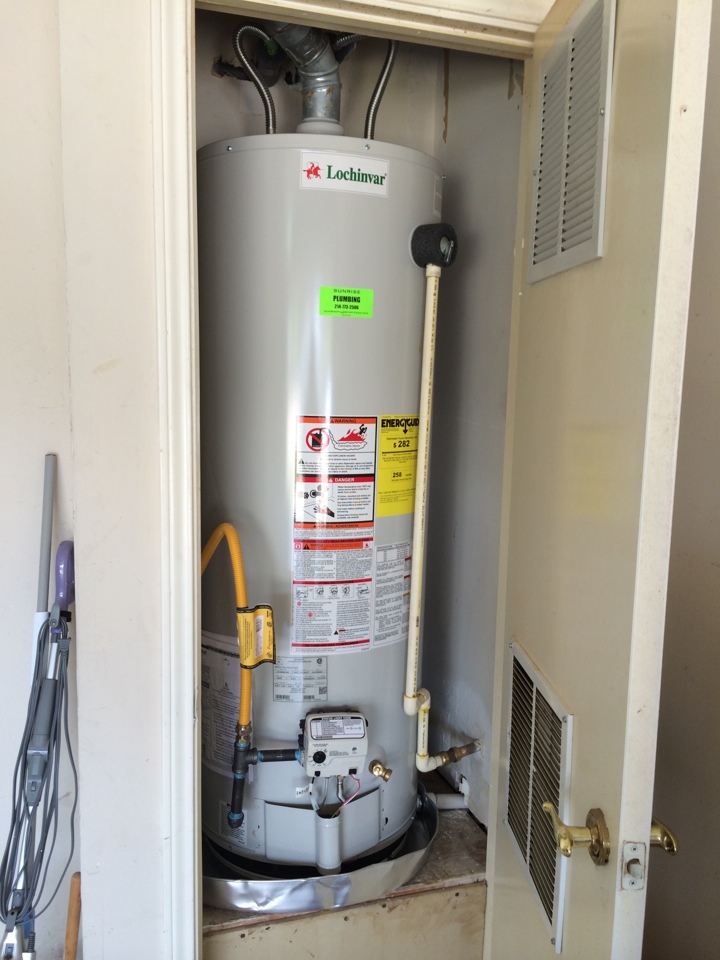What is happening
The US Department of Energy (DOE) has adopted National Appliance Energy Conservation Act (NAECA). This Act explains the new standards for the energy efficiency of water heaters manufactured on or after April 16, 2015.
Who made the new rulings?
The National Appliance Energy Conservation Act (NAECA) was approved by Congress and is administered by the US DOE. This is the same organization that oversees the EnergyStar program. This ruling impacts all water heaters manufactured to be sold in the USA after April 16, 2015.
What are the new water heater regulations?
All water heaters produced after April 16, 2015 must conform to new energy efficiency standards. The required efficiency increase varies by tank size based on predetermined formulas. This translates to a mandatory 3% to 30% greater efficiency over older models. The larger the tank, the more efficiency is required. The gains in efficiency are small, but given that the vast majority of homes in America have a water heater; small gains can add up to big savings for the environment. Basically, if the water heater is 50 gallons or larger, it will require a higher energy efficiency than before. The table below from the DOE website shows the new requirements.
| Product Class | Rated Storage Volume | Energy Factor |
|---|---|---|
| Gas-fired Water Heater | >= 20 gal and <= 55 gal | 0.675 – (0.0015*Vs) |
| > 55 gal and <= 100 gal | 0.8012 – (0.00078* Vs) | |
| Oil-fired Water Heater | <= 50 gal | 0.68 – (0.0019*Vs) |
| Electric Water Heater | >= 20 gal and <= 55 gal | 0.960 – (0.0003*Vs) |
| > 55 gal and <= 120 gal | 2.057 – (0.00113*Vs) | |
| Tabletop Water Heater | >= 20 gal and <= 100 gal | 0.93 – (0.00132*Vs) |
| Instantaneous Gas-fired Water Heater | < 2 gal | 0.82 – (0.0019*Vs) |
| Instantaneous Electric Water Heater | < 2 gal | 0.93 – (0.00132*Vs) |
How does this affect me?
If you have a tankless water heater with an efficiency rating above .82 then your water heater already complies. However if you have a standard tank water heater then you are probably affected. This is more important to know if you are buying or selling a home that is affected. If you are a property owner, a Realtor, or prospective buyer that is participating in a home purchase transaction then you should also be aware of these issues.
In order to gain the efficiency, manufacturers will be doing one of two things (or both): 1) They will be adding additional insulation to water heater tanks. Or, 2) They will be upgrading the heating source to a higher energy conversion. Both of these changes may impact you as follows:

Will the new water heater fit?
1. If manufacturers achieve the efficiency by adding more insulation, the water heaters should be about 2-6 inches wider than their current width. If the water heater is located in a large enough space then that should not be a problem. However, if it is located in a closet, a nook or other tight space, the new water heater may not fit. This is going to be a significant issue for many older homes, condos and apartments because they have water heaters that are typically located in tight spaces. If the attic or door leading to the water heater was tight with the old unit, the new unit may not fit at all. Of course, this will translate into much higher installation costs.
2. If the manufacturer achieves the efficiency by upgrading the unit to a high efficiency fuel burning source, then the venting system may have to be altered. This will also translate into higher installation costs.
Along with possible increases in installation costs, manufacturers will be having a price increase. All of the manufacturers will have to re-tool production lines, and this is expensive. Combine that with increased materials cost from adding more insulation to tanks .
What should I do right now?
Standard water heater tanks last around 8-10 years. If you are thinking it’s time to replace or if you have an older tank located in a tight space then you should think about replacing it now while there are similar units available. Current hot water heater tank styles can still be installed after April 16, 2015 but inventory will eventually run out. You may also consider upgrading to a tankless water heater. These are much more expensive in the short run but there is probably a tankless model available that would fit the existing water heater space. Also, there are gas water heater models that are available today that meet and actually exceed the new standards. Some of these may also fit into the existing water heater space.
In Conclusion
Whether you are a Homeowner, Home Buyer, Realtor or a Property Manager, you should be aware of the impact of upgrading the current water heater. A new water heater may not fit and will probably be more expensive than current models. You can also see more information at the DOE website by CLICKING HERE.




